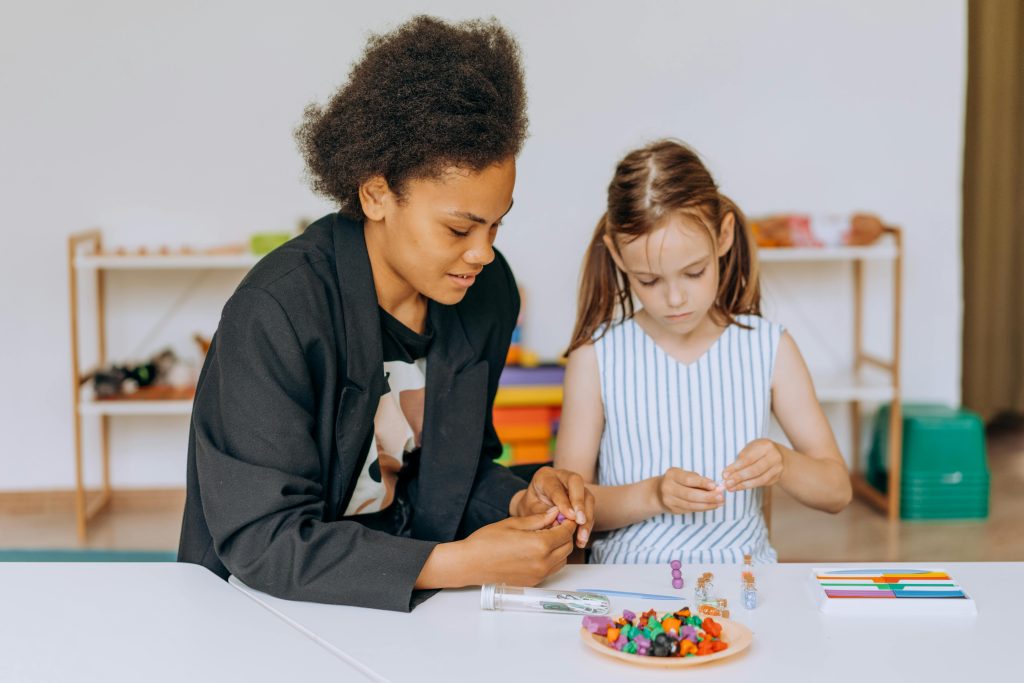Do you know how important it is to play outside?
It is not just fun. They get stronger, think of new ideas and make new friends when they are outside.
It is good for their health and lets them learn through play when they run, jump and explore the world around them. It is more important than ever to get outside when everyone is fond of using computers and gadgets.
That being said, why not get kids outside and show them all the cool things they can do?
Boosting Physical Health and Fitness

Being outdoors can easily strengthen a child physically as they can get into such activities. These help in his or her health to be healthy and active.
- Running, jumping and climbing help build muscles.
- Kids develop better coordination.
- There is an engagement of the whole body in activities such as tag and hide-and-seek.
Improving Bone Health
- Sunshine helps in vitamin D production, this is good for the bones.
- Weight bearing exercises are good for the bone.
- Ordinary game activity prevents the kids bones from developing negatively.
- The heart is strengthened when running and cycling.
- Playing games outside not only encourages children to go outside and stay with nature but also helps to reduce overweight.
- Soma improves the broncho pulmonary through playing some ball games. Such as soccer.
Key Physical Benefits of Outdoor Play
| Activity | Muscle Development | Bone Strength | Cardiovascular Health |
| Running | High | Moderate | High |
| Climbing | High | High | Moderate |
| Cycling | Moderate | Low | High |
Flexibility and Balance

Still children will benefit from outdoor games as it will improve their flexibility and balancing which are important physically. Activities such as indoor and out door games, cycling and skipping also.
- Warming up through stretching games helps to improve flexibility.
- Reaching and climbing improve movement.
- Running on a soft like sand surface strengthens the leg muscles.
Improved Balance
- If you want to improve the stability of your child. These exercise increase the stability of walking on a balance beam and walking on irregular terrain.
- Jumps and landings exercise are core musculature.
- Activities such as skipping or hopping can involve balancing too.
- Catching, this develops hand eye coordination.
- While playing games, running and multi directional dodging helps to do quick reactions.
Flexibility and Balance Activities
| Activity | Flexibility Improvement | Balance Development | Coordination Skills |
| Climbing | High | Moderate | High |
| Jump Rope | Moderate | High | High |
| Walking on Beams | Low | High | Moderate |
Mental Health Benefits of Physical Fitness

Physical fitness doesn’t just benefit the body, it also boosts mental health. Being active outdoors helps kids feel happier and more relaxed.
- Fresh air helps clear the mind.
- Physical activity releases endorphins, reducing stress.
- Kids feel more relaxed after playing outside.
Improving Focus and Attention
- Running and playing helps improve concentration.
- Outdoor play gives a break from screens, helping kids focus on games and develop their mind/ brain naturally.
- Attending in physical challenges builds confidence.
- Group activities help kids to learn coordination and how to work as a team. This taught how to do team work.
- Success in physical activities boosts self confidence.
Mental Health Benefits of Physical Activity
| Benefit | Stress Reduction | Focus Improvement | Self-Esteem Boost |
| Running | High | Moderate | High |
| Group Sports | Moderate | High | High |
| Free Play Outdoors | High | Moderate | Moderate |
Long-Term Health and Lifestyle Habits

When people focus on a passion for physical activities at a young age, they mostly lead healthy lifestyles later on in life. Outdoor play helps for active growth and health of children.
- Students who play outside are more likely to become active when they are adults.
- Having outdoor activities raises positive feelings towards sports.
- Exercise can also decreases the chances of future diseases.
Promoting Healthy Weight
- Doing outdoor exercise burns body fat, preventing excessive weight.
- Engaging in sports as well as being active decreases the potential of becoming fat.
- Contact with physical activities is healthy for children without wasting time on the computer.
- Daylight activities helps to get rid of diabetes, heart disease and other illnesses when we get old.
- Being engaged in outdoor play helps improve the immune system.
- Fitness outdoors reduces the potential health hazards in the future.
Long-Term Health Benefits of Outdoor Play
| Benefit | Lifelong Fitness | Weight Management | Health Risk Reduction |
| Active Sports | High | High | High |
| Free Outdoor Play | Moderate | Moderate | Moderate |
| Biking/Walking | High | Moderate | High |
Bullet Points Summary 5
- Engaging in activities such as outdoor physical games improves the strength of muscles and bones and the aerobic capacity.
- Physical activities like climbing and playing sports encourage balance and flexibility.
- The same applies as swimming and playing outside reduces depression and anxiety as well as self esteem improvement and concentration increases.
- Such children learn physical habits which eradicates health complications in their adulthood.
To promote such outdoor active games is what would not only provide children with such a bright healthy future. Such benefits not only bring improvement in fitness levels but also improves mental state as well as health of the future. Let us encourage outdoor activity.
Enhancing Mental Well-Being

Physical advantages of outdoor play are generally shown mostly. However, its advantages to mental health must not be overlooked as well. Nature, open and large spaces and playing outdoor can help improve a child’s mental and emotional development.
And in this article, we will look at the benefits of outdoor activities on mental health and what kind of positive effects they have, starting with the most obvious effects of stress relief and improving creativity and interacting with people.
Reducing Stress and Anxiety through Outdoor Play

One of the most effective and most immediate mental health benefits of extensive outdoor play for children is stress relief. Contact with nature, supply of fresh air can help your child to grow within the touch of nature.
- Research shows that environmental psychology has confirmed such benefits of greenspace as reduced cortisol levels a stress hormone.
- Utilizing the outdoors helps to quiet the mind and soothe the body.
- Natural light, as well as fresh air, improve the mood.
Children are more aware of, and relate to, the things around them, when they play outside. Free play without the existence of walls and restrictive places gives children a sense and freedom. And as studies have shown, the environment has a very relaxing effect and takes away the kids worries after spending time outdoors.
Physical Activity and Stress Reduction
- Exercise releases endorphins, which improve mood and reduce stress.
- Activities like running or climbing reduce anxious feelings.
Physical activity is a natural stress reliever. When children engage in outdoor play, their bodies release endorphins, often called “feel-good” hormones, which can drastically reduce feelings of stress. Running, playing or simply moving around helps release tension and provides a healthy mind.
The Importance of Unstructured Play
- Children socialize and let go of inhibitions through unstructured play.
- It encourages imagination and relieves the tension.
- Kids experience less stress when they play, they enjoy the games on their own.
Free play is a must for well being. Physical or emotional restraints in children have an impact when there are rules or timetables. These types of games will encourage self sufficiency whereby the child remains relaxed and less tense.
Stress and Anxiety Relief through Outdoor Play
| Factor | Impact on Stress | Impact on Anxiety | Overall Mental Health |
| Nature Exposure | High | High | High |
| Physical Activity | Moderate | High | High |
| Unstructured Play | High | Moderate | High |
Boosting Creativity and Cognitive Skills

Kids spend time outdoors not only for physical activity but also for creative and mental exercise. Those children who are able to get out of the house are more creative and solution oriented thinkers.
- Children play freely in the absence of structures and age structures, they create new games and stories of their own.
- Playing with simply sticks and rocks encourages fun during play.
Playing outside is the most appropriate context for children as it is a source of fun for them. When it comes to the house, there is toys and furniture, each piece have a defined function. In nature, children are not confined to a set of games and roles. “This is a sword, this is a spaceship,” and the child is already lost.
Problem Solving through Play
- Clearly, adaptive play happens on the spot and requires kids to think outside the box when they are figuring out how to solve a problem.
- Nature helps kids learn how to use tools and understand the world around them.
- Interaction with friends helps children develop group work.
Taking children to the park provides them with situations whereby they need to decide the best way to do some things like climbing trees or crossing streams. These are problems that need to be solved and therefore the participants have to be creative in solving them.
Besides, if two or more children are engaged in solving an issue, they develop the habit of working in teams.
Improving Attention and Focus
- Spending time outdoors increases chances of changing activities therefore improving concentration.
- Kids’ brains get smarter when they play outside because the exercise is so good for them.
- It is nice to take a break from the harsh realities of modern life, which is built on machines and computers.
When kids play outside in the open field almost every day of the week, they pay more attention and can focus for longer periods of time. This could be because the kids are outside, on the other hand the neighbours child have a lot of toys and electric things which are not usually productive for them.
Cognitive Benefits of Outdoor Play
| Cognitive Skill | Imagination | Problem-Solving | Focus and Attention |
| Unstructured Play | High | Moderate | Moderate |
| Nature Exploration | High | High | High |
| Group Play | Moderate | High | Moderate |
Social Skill Development in Outdoor Play

Since children play outdoors, it is hard to separate them from other children. Playing improves cooperation among children and their communication skills. Whether in groups in competitive sports or running in the beautiful park, kids get basic sociolinguistics among other things from outdoor games.
- Group activities teach a kid how to do cooperation.
- Children learn to share, take turns and support each other.
- Team sports improve communication and teamwork skills.
When children play outside, especially in groups, they must learn how to work together. Team sports like soccer or basketball teach them the importance of cooperation, communication and teamwork. These skills are important not only for social development but also for success in life.
Building Friendships
- Outdoor games provides opportunities to make new friends.
- Playing together creates strong bonds between children.
- Kids learn to build and maintain friendships through activities. Most of these friendship last a lifetime.
Playing outside helps children to meet new people and grow friendships. Whether at school playgrounds, local parks or neighborhood streets.
- Outdoor play teaches children how to resolve conflicts.
- Kids learn to understand others perspectives and feelings.
- Playing with other people helps you understand and care about them.
Conflict is a natural part of play and outdoor games often present opportunities for kids to resolve disputes on their own. Whether it’s deciding the rules of a game or settling disagreements, children learn conflict resolution skills.
Social Skills Developed through Outdoor Play
| Social Skill | Cooperation | Friendship Building | Conflict Resolution |
| Team Sports | High | Moderate | Moderate |
| Group Free Play | Moderate | High | High |
| Nature Exploration in Groups | Moderate | High | Moderate |
Emotional Resilience and Confidence Building

Kids can play outside safely, face challenges and become stronger. These things help them become emotionally strong.
- Outdoor play have natural challenges, like climbing trees or riding a bike.
- Children learn to face their fears and overcome obstacles.
- These things make you stronger emotionally and give you strength.
Kids naturally face difficulties when they play outside. They learn to face their fears and become stronger by doing things like riding bikes, climbing trees and standing on logs. Kids get stronger and more confident about who they are when they learn how to deal with physical and mental problems.
Building Confidence through Achievement
- Doing things outside that you enjoy increases the confidence you have in yourself.
- Learning new things, like how to ride a bike or play a sport, makes you feel more confident.
- Young people are proud of what they can do.
When kids reach their goals, like getting higher, moving faster or learning a new sport, they feel better about themselves. Every little thing you do well makes you feel better about your own confidence. Kids gain confidence in their skills and are more likely to try new things when they have these experiences.
- Kids can handle their feelings better when they play outside.
- Being active can help you feel less frustrated or angry.
- Kids can calm down and start over mentally when they spend time outside.
Kids can handle their feelings better when they play outside. Being active is a good way to get rid of bad emotions like anger.
Emotional Benefits of Outdoor Play
| Emotional Skill | Confidence Building | Resilience | Emotional Regulation |
| Risk-Taking Activities | High | High | Moderate |
| Mastering New Skills | High | Moderate | Moderate |
| Physical Activity | Moderate | High | High |
Bullet Points Summary
- By being in nature, being active and playing without rules, playing outside can help lower stress and anxiety.
- Kids are more creative when they use their imaginations, solve problems, and focus better.
- Team sports and group play are natural ways to improve social skills like working together, making friends, and resolving conflicts.
- As kids face challenges, get over their fears, and learn how to control their emotions, they build emotional strength and confidence.
Parents and teachers can improve kids’ physical and mental health by pushing them to play outside. A lot of good things happen when kids do things outside, like lowering their stress, making them stronger, encouraging their creativity, and making friends. Playing outside is good for both your physical and mental health, which makes it an important part of a child’s growth.
Social Skills and Teamwork

Outdoor play is an excellent platform for children to develop essential social skills and learn how to work in teams. Playing outside, whether it is in an organized sport or an unplanned activity with a group, boosts cooperation, conversation and interaction. Kids learn how to get along with others, understand them and work together through these activities.
Developing Communication Skills in Outdoor Play

Communication is key to forming social bonds and outdoor play provides opportunities for children to improve their verbal and nonverbal communication abilities.
- Outdoor games get the children to be more active with their thoughts.
- Kids understand how to give orders, how to seek information and how to express emotions.
- Language and vocabulary skills are also developed during group events like sports and tag among others.
Children playing outside will engage with others and so require many children out in the field with them. It might include explaining how a game works, asking a person to join you or insisting on taking breaks alternatively. Such engagements help in learning how to express their internal thoughts and ideas. As they get older, they will pick up more words and better communication naturally.
Non Verbal Communication and Body Language
- Children develop an ability to recognize voice intonations, body movements and facial reactions.
- Active games such as tag or catch a ball development skills of communication without words.
Interacting outdoors also develops the children’s skills in nonverbal communication. Going outdoors for physical activity, for example throwing a ball, requires children to pay attention to people surrounding them and what they do.
Listening and Responding to Others
- Active listening is developed through outdoor activities.
- Children learn to wait their turn as well as consider the ideas of others.
- Children need to take the perspective of others in team sports and group games.
One cannot only be the orator. Playing outdoors with other children also provides opportunities to learn about listening, processing and responding to others. This teaches them to listen better and inspires respect in their conversations.
Communication Skills Developed in Outdoor Play
| Communication Skill | Verbal Communication | Non-Verbal Communication | Active Listening |
| Group Play Activities | High | Moderate | High |
| Team Sports | Moderate | High | Moderate |
| Unstructured Play | High | High | High |
Building Cooperation and Teamwork
Kids learn how to work together and build teamwork skills when they play outside with other kids. Kids learn how to work together to reach a goal whether they are playing sports or making a new game.
- Playing outside teaches kids how important it is to work together to reach a goal.
- Every child learns how to work with others and solve problems.
- Games where you have to work with other people, like soccer or basketball, make teamwork more important.
When kids play games where they have to work together, they learn that they need to do their part to win. Children work hard to score goals and pass the ball in soccer, which is the same case. Children, on the other hand, know that trying to do everything on your own is pointless. They have to give tasks to other people, rely on others and work together to reach a goal.
Negotiating Roles and Responsibilities
- Children learn how to divide tasks and take roles.
- Outdoor games encourage kids to negotiate and assign roles.
- Working together helps them understand the importance of responsibility.
When kids play outside, they often have to decide who does what. They learn how to bargain, compromise, and take on responsibility by deciding who will be “it” in a game of tag or who will play each position in a soccer game. This helps them learn what is fair and who is responsible.
- Outdoor play encourages collaborative problem solving.
- Kids learn to resolve conflicts and overcome challenges as a team.
- Group activities helps to do critical thinking and cooperation.
Outdoor play often faces challenges that require teamwork to solve. For example, building a fort or figuring out how to cross a river needs group problem solving. These activities promote critical thinking and help children learn how to collaborate effectively.
Teamwork and Cooperation in Outdoor Play
| Teamwork Skill | Cooperation | Negotiation | Problem-Solving |
| Team Sports | High | Moderate | High |
| Group Unstructured Play | High | High | Moderate |
| Cooperative Problem-Solving | Moderate | High | High |
Understanding Empathy and Social Responsibility

Children can learn care and a sense of social duty through outdoor play. Teenagers learn how to be socially responsible and understand how others feel by interacting with their peers in a variety of places.
- Outdoor play encourages kids to consider others feelings.
- Interacting with peers helps children understand different perspectives.
- Sharing experiences improves empathy and kindness.
When kids play together, they naturally get into situations where they need to show understanding. Kids learn how to understand and react to other people’s feelings. Kids can practice being kind and improve their emotional intelligence while playing outside.
- Group events help people feel responsible for each other.
- Kids learn to be respectful of shared places when they play outside.
- Kids learn how important it is to be fair, share, and work together.
Kids learn to be responsible for others when they play outside. They learn to be aware of other people, treat shared areas with care, and look after their surroundings. They become more socially responsible and value fairness and working together as a result of these events.
Empathy and Social Responsibility Development in Outdoor Play
| Social Skill | Empathy | Conflict Resolution | Social Responsibility |
| Group Play Interaction | High | Moderate | Moderate |
| Team-Based Activities | High | High | High |
| Unstructured Group Play | Moderate | High | High |
Enhancing Leadership and Independence

Outdoor play is also a great way for children to develop leadership skills. By taking charge of group activities or organizing games, kids learn how to lead others.
- Outdoor activities provide opportunities for kids to take leadership roles.
- Children learn to organize and lead others in group games.
- It builds courage and leadership skills to be in charge.
Kids can step up and take the lead many times when they play outside. Kids feel more confident in their ability to lead others when they plan a game of tag, give roles in a sport, or take a group on an adventure. Getting these kinds of situations is important for developing leadership skills.
Building Independence through Free Play
- Unstructured outdoor play helps kids learn to make decisions on their own.
- Kids learn to select their own actions and decide what to do.
- Kids learn to be independent by playing by themselves.
Kids can make their own choices during free play. They learn to find their way around, make up games, and decide what to do next without the rules of organized games. Kids learn to be independent and rely on themselves.
- Outdoor team sports teach leadership by example.
- Children learn to motivate and support their mates.
- Taking on leadership roles in outdoor play improves confidence and decision making skills.
In team sports or group activities, children often take roles naturally. By motivating their teammates, setting an example and making decisions, they learn valuable leadership qualities. Outdoor play helps them to practice these skills in a fun and supportive way.
Leadership and Independence Development through Outdoor Play
| Leadership Skill | Initiative | Independence | Confidence |
| Leading Group Activities | High | Moderate | High |
| Free Play | Moderate | High | Moderate |
| Team Sports | High | Moderate | High |
Bullet Points Summary 2
- Playing outside improves conversation skills, such as active listening, speaking, and body language.
- Working together in group activities and team sports helps kids learn how to work together and get along with others.
- Outdoor play is a natural way to learn sympathy, how to solve problems, and how to be a good citizen.
- Kids learn to be leaders and more independent when they take the lead in group games.
Playing outside is a great way to improve social skills and teamwork. Outdoor activities are good for more than just your health. They can help you communicate and work together better, as well as develop understanding and leadership. Getting kids to play outside is good for them because it helps them become confident, socially skilled adults who can work with others and lead them.
Stimulating Cognitive Development
Outdoor games is not just about physical activity. The freedom to explore, create and engage with their surroundings provides opportunities for children to develop problem solving skills, improves memory and improve their attention. By navigating new environments, experimenting with various activities and socializing, kids sharpen their abilities in natural, fun and engaging ways.
Enhancing Problem Solving Skills
When kids play outside, they can learn new ways to solve problems and improve the path they already have. Kids learn to think critically and solve problems on their own when they take on new tasks and play without rules.
- Climbing, jumping and balancing encourage problem solving.
- Kids learn to assess risk and plan movements.
- Playgrounds, parks and nature provide new physical challenges.
Outdoor environments, such as playgrounds and nature, present physical obstacles like climbing a tree, crossing a stream or figuring out how to get across monkey bars. Children learn to approach these obstacles by solving the situation, risks and deciding what action he/she will take, which helps improve their problem solving capabilities.
Creative Problem-Solving in Unstructured Play
- Play that is not regulated encourages invention and creativity.
- Kids create their own games and regulations.
- Playing with problems improves critical thinking.
Children frequently invent their own games or come up with solutions to difficulties, such as coming up with new games to play with friends or working out how to build a fort. Play like this strengthens their capacity for creative problem solving and lets them to think beyond the box.
- Playing in groups promotes solving problems as a group.
- Children get to cooperate and share ideas.
- Outdoor team-building exercises develop cooperative problem-solving skills.
Playing in groups gives people the chance to solve problems together. Whether they are organizing a soccer match or solving a treasure hunt puzzle, kids receive experience pooling ideas, speaking to one other and working together to find a solution.
Types of Problem-Solving Skills Enhanced by Outdoor Play
| Type of Problem-Solving | Physical Obstacles | Creative Problem-Solving | Group Problem-Solving |
| Climbing & Exploration | High | Moderate | Low |
| Unstructured Play | Low | High | Moderate |
| Team Games & Group Play | Low | Moderate | High |
Improving Attention Span and Focus

Outdoor play naturally improves children’s attention to the environment and challenges their ability to focus on tasks.
- Environments that are natural reduce mental exhaustion.
- Kids that spend time outside are better at focusing.
- Improved memory retention has been associated with exposure to nature.
Studies indicate that children’s attention is improved and mental fatigue is lessened when they spend time outside. The sights, sounds, and sensations of nature offer an exciting and peaceful environment that naturally supports brain clarity and attention restoration.
Structured Games for Focus Development
- Sports and outdoor games teach focus and concentration.
- Following rules and strategies helps improve attention.
- Competitive activities between friends.
Playing outdoor games like tag, soccer or hide and seek requires children to focus on rules, strategies and the movements of other players. These activities demand concentration and quick thinking, training children to maintain focus over longer periods.
- Playing on your own increases self directed attention.
- Engaging in outdoor activities provides chances to practice attention.
- Children pick up the skill of being aware of their behaviors and environment.
Children frequently engage in solo exploration during outdoor games, when they may concentrate on their immediate environment, objects or tasks without being distracted. Playing in the mud, stacking rocks, or studying a bug are examples of concentrated, intentional play that extends their attention.
Activities that Boost Attention Span and Focus in Outdoor Play
| Type of Play | Attention Restoration | Focus Development | Mindful Engagement |
| Nature Exploration | High | Low | Moderate |
| Structured Sports | Low | High | Moderate |
| Independent Exploration | Moderate | Low | High |
Boosting Memory and Cognitive Flexibility

Outdoor play encourages the development of memory and cognitive flexibility, this help children to adapt to new situations, remember important details and apply what they’ve learned in creative ways.
- Repetition of tasks strengthens memory.
- Children remember game rules and tactics.
- Engaging in outdoor activities provides mental tests that improve memory.
Children frequently need to remember rules, strategies, and actions when playing outdoor games. They become better at remembering information and using it when they play repetitive games like racing, catching, or treasure hunting. Both short term and long term memory are strengthened by this.
Enhancing Cognitive Flexibility through Unpredictable Play
- Outdoor environments constantly change, this requires kids to adapt with the changing situation and the environment. This teach how to react in any situations.
- Children learn to switch between different tasks and rules.
- Cognitive flexibility is improves through diverse outdoor activities.
Play outside is frequently diverse and surprising. Without using formal transitions, children can move from a single sport to another, such as running, climbing, tagging or exploring a woodland route. This continual switching between tasks improves flexibility in thinking in children and teaches them how to adjust to and react to new situations.
- Exploring new environments improves awareness.
- Kids learn to navigate and remember locations.
- Outdoor exploration builds memory of physical spaces and directions.
Exploring outdoor environments also strengthens memory. Whether they are navigating a park, remembering the layout of a playground or finding their way back to a favorite spot, children develop a sense of direction and awareness.
Memory and Cognitive Flexibility Skills Developed through Outdoor Play
| Cognitive Skill | Memory Development | Cognitive Flexibility | Spatial Memory |
| Structured Outdoor Games | High | Moderate | Low |
| Unstructured Free Play | Moderate | High | Moderate |
| Nature Exploration | Moderate | Moderate | High |
Enhancing Creativity and Imagination

There are countless possibilities for youngsters to explore their imagination and creativity while they play outside. Kids may imagine, create and explore in ways that boost mental development.
- Open ended, creative play is encouraged by nature.
- Children make up situations, tales and experiences.
- Natural items that goes with creativity include sticks, rocks and leaves.
Children have an endless supply of creative possibilities when they play. Kids are allowed to make up games, create characters and use natural objects as their stories without any restrictions or guidelines. This kind of activity develops mental exploration and inspires original thought.
Role Playing and Social Imagination
- Group games promotes role playing and pretend games.
- Kids experiment with social roles and scenarios.
- Creative experiences shared with others help inspire creativity.
When kids play in groups outside, they frequently adopt diverse personas, such as superheroes, explorers or animals. With the help of their creativity, children may create stories together, try out different roles and grow in love. Collaboration promotes creativity as well.
- Kids draw, build and sculpt using natural materials.
- There are countless ways to express yourself artistically in nature.
Children can also express themselves artistically in outdoors. The natural world can be used as a creative medium when one draws in the mud, builds structures out of pebbles and sticks or create mud sculptures. Children’s ability to express themselves freely improves their ability to solve problems creatively.
Creativity and Imagination Stimulated by Outdoor Play
| Type of Play | Imaginative Play | Role-Playing & Social Imagination | Artistic Expression |
| Nature-Based Play | High | Moderate | High |
| Group Role-Playing Games | Moderate | High | Low |
| Artistic Outdoor Activities | Moderate | Low | High |
Bullet Points Summary 3
- Outdoor games develops problem solving skills, attention span, memory and creativity.
- Natural environments encourage children to overcome physical challenges.
- Games helps kids improve cognitive flexibility, memory and creativity by offering varied activities.
- Outdoor activities, both in groups and individually, encourage artistic expression, social thinking, and interaction.
For children’s mental development, playing outdoors is essential in boosting brain growth. Unstructured outdoor situations provide opportunities and challenges that improve their creativity, problem solving and critical thinking skills. Playing outside improves mental abilities and develops young minds.
Encouraging a Love for Nature

To make kids more environmentally aware and responsible, it is important to teach them to love nature. Kids can connect with nature through play outside, but they can not do that through books or computers. Kids learn to respect and be amazed by nature by visiting forests, parks, beaches, and backyards. This can help them form habits of caring for the environment that will last a lifetime. Being in nature not only makes you feel better emotionally, but it also helps you learn about ecosystems, animals and why we need to protect our world.
Developing Environmental Awareness through Play
One of the benefits of outdoor games is the development of environmental awareness. Through direct interaction with nature, children learn about ecosystems, the importance of conservation and the wonders of the natural world.
- Children observe plants, animals and their environments.
- Outdoor games teaches kids how different organisms interact.
- Direct connection to ecosystems and respect for nature.
When kids play outside, they get to see environments for themselves. Kids learn about the balance of nature when they play outside and watch things like birds, ants building a nest and trees changing with the seasons. This hands-on experience teaches kids about loving living things and gives them a better idea of how ecosystems work.
Learning About Conservation Through Exploration
- Outdoor activities can introduce the concept of conservation.
- Kids learn about the impact of pollution and habitat destruction.
- Hands-on experiences with nature make environmental issues relatable.
When children engage in nature based activities, such as hiking, camping or even collecting leaves, they often become more aware of environmental issues. They learn about the importance of keeping spaces clean, protecting wildlife habitats and the effects of pollution.
- Children develop a connection with animals through outdoor play.
- Observing wildlife grows empathy for living creatures.
- Experiencing nature up close encourages respect for animal habitats.
Outdoor games often brings children into close contact with wildlife, whether it’s watching a squirrel gather food or finding a frog near a pond. These interactions help children develop empathy for animals and an understanding of their role in the environment.
Ways Outdoor Play Builds Environmental Awareness
| Area of Learning | Understanding Ecosystems | Conservation Awareness | Empathy for Wildlife |
| Direct Observation | High | Moderate | High |
| Nature Exploration Activities | Moderate | High | Moderate |
| Interaction with Wildlife | Low | Low | High |
Nurturing Curiosity and Exploration
Outdoor games encourages curiosity and exploration. Children who explore the outdoors develop a lifelong fascination with the world around them, they get interest in natural science, geography and biology.
- Outdoor environments inspire endless questions.
- Kids learn by asking about plants, animals and natural phenomena.
- Nature provides a perfect environment for discovery.
Kids are more interested in the world when they are outside. What makes leaves change color? How do birds make their nests? What makes some flowers bloom in the spring? When kids play outside, these kinds of questions come up easily, which results in learning and exploration.
Unstructured Play for Exploration
Unstructured game is a key component of outdoor activities. With no set rules or time, children are free to explore, find new things and work with their curiosity. Whether they’re collecting rocks, building sandcastle or examining insects, unstructured games encourages independent exploration.
- Outdoor games provides hands-on learning opportunities.
- Kids learn about ecosystems, geology and biology through games.
- Exploration to a deeper understanding of the natural world.
Outdoor play also offers real-world learning experiences. Kids might learn about water cycles by splashing in a stream, understand erosion by watching soil wash away or discover animal behaviors by observing them in their natural habitats. This hands-on learning creates a deeper connection with nature.
Ways Outdoor Play Nurtures Curiosity and Exploration
| Area of Exploration | Natural Curiosity | Unstructured Play | Hands-On Learning |
| Nature Walks | High | Moderate | High |
| Playing in the Yard | Moderate | High | Moderate |
| Visiting Parks & Forests | High | Moderate | High |
Sense of Environmental Responsibility
Playing outside helps children develop a sense of responsibility for the environment. When kids spend time in nature, they’re more likely to want to protect it. Getting kids interested in nature at a young age can teach them how to care the world around him/her.
- Kids learn to take care of natural spaces.
- Activities like gardening teach responsibility.
- Picking up litter and caring for plants.
Whether it’s watering plants, cleaning up after a picnic or recycling trash during a hike, kids learn to take care of their environment. These small acts develop a greater sense of responsibility toward nature.
Participation in Environmental Projects
- Kids can join environmental programs or clean up events.
- Planting trees and gardening projects.
Children who participate in community or school-based environmental projects, such as tree planting, park clean ups or gardening, those children understand how they can contribute to preserving and protecting nature.
Composting, recycling and water conservation are practical lessons. Kids who are taught sustainable habits early in life are more likely to continue practicing them into adulthood.
Ways Outdoor Play Fosters Environmental Responsibility
| Responsibility Building Activities | Hands-On Learning | Environmental Projects | Sustainable Practices |
| Gardening | High | Moderate | High |
| Park Clean-Ups | Moderate | High | Moderate |
| Composting & Recycling | Low | Low | High |
Building Emotional Connections with Nature

Emotional connections with nature often start in childhood. Outdoor play offers children the opportunity to build lasting bonds with the natural world/
- Spending time in favorite outdoor spaces builds emotional bonds.
- Children form attachments to places they regularly visit.
- Emotional connections encourage environmental protection.
Children who frequently play in the same natural spaces, such as parks, beaches or forests, develop emotional attachments to these places. They become “their” special spots and as kids grow, they develop a desire to protect and preserve them.
Nature as a Source of Comfort
Outdoor play provides stress relief and relaxation. For many children, nature becomes a source of comfort and relaxation. Time spent outside can offer emotional relief from stress or anxiety. Whether it’s sitting under a tree, walking through a garden or watching the sunset.
Emotional Connections Developed through Outdoor Play
| Emotional Benefit | Emotional Attachment | Comfort in Nature | Lifelong Connection |
| Regular Nature Play | High | Moderate | High |
| Solo Time in Nature | Moderate | High | Moderate |
| Family Nature Activities | High | Moderate | High |
Bullet Points Summary 4
- Outdoor play develops environmental awareness, curiosity and responsibility in children.
- Hands-on experiences help children understand ecosystems, conservation and sustainable practices.
- Kids who love nature are more likely to protect and preserve the environment as they grow older.
By encouraging a love for nature through outdoor games, we can nurture the next generation of environmental. Whether exploring a park, playing in the backyard or participating in community clean-ups, children who grow up with the natural world are more likely to carry these values, protecting and preserving the planet for future generations.
Improving Sleep Patterns

Quality sleep is important for overall health and well-being. Many people struggle with sleep issues, which can cause physical and mental health problems. This guide shares effective strategies for improving sleep patterns.
Understanding Sleep Patterns
To improve sleep, it’s important to understand how sleep works. Sleep cycles consist of different stages, including light sleep, deep sleep and REM (rapid eye movement) sleep.
- Light Sleep: The initial phase of sleep where you just started to sleep. It’s easy to wake up during this stage.
- Deep Sleep: In this phase we gain physical restoration. The body repairs itself and growth hormones are released.
- REM Sleep: Important for brain functions such as memory and learning. Most dreaming occurs during this stage.
The Importance of Sleep Cycles
- Sleep cycles typically last about 90 minutes, repeating several times throughout the night.
- Each cycle includes light, deep and REM sleep.
- Disruptions in these cycles can affect mood, brain function and overall health.
Factors Affecting Sleep Patterns
- Lifestyle Choices: Diet, exercise and screen time can influence sleep.
- Environmental Factors: Noise, light and temperature impact sleep quality.
- Stress and Anxiety: High levels of stress can make it difficult to fall and stay asleep.
Common Factors Affecting Sleep Patterns
| Factor | Description | Impact on Sleep |
| Lifestyle Choices | Diet, exercise, screen time | Can disrupt sleep quality |
| Environmental Factors | Noise, light, temperature | Can make it hard to fall asleep |
| Stress and Anxiety | Mental and emotional stressors | Can cause insomnia |
Establishing a Consistent Sleep Schedule
One of the most effective ways to improve sleep patterns is by establishing a consistent sleep schedule. This helps regulate your body’s internal clock, making it easier to fall asleep and wake up.
- Try to go to bed and wake up at the same time every day.
- Consistency helps train your body’s internal clock.
- Avoid sleeping more in on weekends to maintain the schedule.
Create a Bedtime Routine
- Develop relaxing pre-sleep activities to signal your body it’s time to do to bed.
- Activities like reading, taking a warm bath or practicing relaxation techniques.
- Avoid activities like watching TV or using electronic devices.
- While napping can be beneficial, daytime sleep can disrupt nighttime sleep.
- If you nap, limit it to 20-30 minutes and avoid late afternoon naps.
- Use naps strategically to avoid compromising nighttime sleep.
Benefits of a Consistent Sleep Schedule
| Benefit | Description |
| Improved Sleep Quality | Better sleep leads to enhanced overall health. |
| Easier to Fall Asleep | A routine helps signal your body it’s time for sleep. |
| Enhanced Daytime Alertness | Consistent sleep leads to improved focus and energy levels. |
Creating a Sleep-Friendly Environment

Your sleep environment plays a significant role to fall asleep. By making a few adjustments, you can create a more space for rest.
- Use blackout curtains to block outside light.
- Consider using a sleep mask if you can’t eliminate all light.
- Dim lights in the evening to signal to your body that it’s time to wind down.
Manage Noise Levels
- Use white noise machines or fans to drown out disruptive sounds.
- Earplugs can help block out noise from the environment.
- If possible, create a quiet sleeping area.
- The best sleep temperature is typically between 60-67°F (15-20°C).
- Use fans or adjust heating to maintain a comfortable environment.
- Layer bedding so you can adjust your warmth as needed.
Elements of a Sleep-Friendly Environment
| Element | Recommendations |
| Light Control | Blackout curtains, sleep masks |
| Noise Management | White noise machines, earplugs |
| Temperature Control | Maintain a cool room temperature (60-67°F) |
Incorporating Healthy Lifestyle Choices

Healthy lifestyle significantly impacts sleep quality. By making this, you can get better sleep patterns.
- Avoid heavy meals, caffeine and alcohol close to bedtime.
- Instead, light snacks that is good to eat before sleep, like bananas or oatmeal.
- Stay hydrated but limit fluids right before bed to minimize nighttime trips to the bathroom.
Regular Exercise
- Try to do 30 minutes of exercise everydays.
- Morning or early afternoon workouts are best for sleep.
- Avoid vigorous exercise before bedtime.
- Practice relaxation techniques such as deep breathing, meditation or yoga.
- Clear your mind of worries before bed time.
- Participating in calming activities can help reduce stress levels.
Healthy Lifestyle Choices for Better Sleep
| Choice | Recommendations |
| Diet | Avoid heavy meals and caffeine before bedtime |
| Exercise | Aim for regular exercise, preferably earlier in the day |
| Stress Management | Practice relaxation techniques and clear your mind |
Improving sleep patterns requires understanding the mechanics of sleep, following a consistent schedule, creating a sleep-friendly environment and making healthy lifestyle choices. Remember that sleep is not just a time for rest. It’s a component of your overall health. Start making small changes today and watch as your sleep quality improves.
Building Resilience and Independence

Kids who are resilient can deal with problems, adjust to new situations and get back on their feet after a failure. Independence helps people become self-sufficient, confident and good at making decisions. All of these characteristics give kids the strength and confidence to handle the ups and downs of life.
Understanding Resilience
Being resilient means being able to get back up after problems or setbacks. It helps kids deal with stress and learn how to do that.
What is Resilience?
- Being resilient means dealing with tough events in a healthy way.
- It is not just about getting by, but also about living in face of problems.
- Children learn to be strong through situations.
Kids who are resilient are better able to deal with things that stress them out, like family problems, social problems, or pressure from school. They learn the skills they need to get past problems, which makes them more flexible.
Importance of Resilience in Childhood
- Resilience supports emotional strength and mental health.
- It improves problem-solving skills and creativity.
- Resilient children are often more confident and have better self-esteem.
Children who develop resilience are more likely to face challenges with a positive attitude. This mental strength not only supports their emotion but also improves their ability to solve future difficulties.
- Family Support: A loving and caring home life makes people stronger.
- Peer Relationships: Positive friendships encourage emotional strength.
- Life Experiences: Overcoming challenges and setbacks builds resilience.
Factors Influencing Resilience in Children
| Factor | Description | Impact on Resilience |
| Family Support | Emotional and practical support from family | High |
| Peer Relationships | Positive friendships that encourage growth | Moderate |
| Life Experiences | Opportunities to overcome challenges | High |
Independence
Kids can learn to be independent and confident by doing things on their own. You help kids learn important life skills.
- Allow children to make choices for their age.
- Encourage them to judge pros and cons before deciding.
- Support them in accepting the consequences of their decisions.
Giving children opportunities to make decisions helps them learn to trust their judgment. Whether it’s choosing clothes or deciding how to spend their free time, decision-making is an important skill.
Promoting Responsibility
Assign age-appropriate jobs and tasks at home. Teach children how to manage their time effectively. Encourage them to take ownership of their belongings.
When children have responsibilities, they learn the value of accountability and the importance of completing tasks. These experiences build a sense of accomplishment and self-worth.
- Get kids to think deeply about the problems they are facing.
- Ask them open-ended questions to get them thinking about how to solve the problem.
- Before you step in, let them try to solve the problem on their own.
Teaching kids how to solve problems gives them the power to do it themselves instead of relying on other people. Being independent makes them feel better about themselves and gets them ready for future difficulties.
Ways to Foster Independence in Children
| Strategy | Description | Benefits |
| Decision-Making | Letting kids make age-appropriate choices | Builds confidence and self-trust |
| Responsibility | Assigning chores and tasks | Teaches accountability and time management |
| Problem-Solving Skills | Encouraging independent thinking | Develops critical thinking and resilience |
Cultivating Emotional Intelligence
Emotional intelligence plays a role in resilience and independence. It helps children understand and manage their emotions, which is important for managing challenges.
- Help kids figure out how they feel and how to handle it.
- Motivate them to talk about how they feel in a healthy way.
- Show how to deal with your feelings in a good way when things get tough.
You give kids a way to deal with their feelings by teaching them to work with it. Being aware of this makes them more resilient by helping them deal with stress in a healthy way.
Building Empathy
- Encourage children to consider others perspectives and feelings.
- Discuss social situations and how to do appropriate responses.
- Teach kindness and understanding in daily interactions.
Empathy is a thing of emotional intelligence. By using empathy, children learn to navigate social situations and build supportive relationships, improves their resilience.
- Teach relaxation techniques, such as deep breathing or mindfulness.
- Encourage physical activity as a way to reduce stress.
- Help children develop a toolkit of coping strategies for difficult situations.
By teaching kids how to deal with worry, you give them the abilities they need to do so. These skills are important for building resilience and independence because they let kids take care of problems.
Components of Emotional Intelligence
| Component | Description | Benefits |
| Emotional Awareness | Recognizing and understanding feelings | Enhances coping skills |
| Empathy | Understanding others’ emotions | Builds social connections |
| Stress Management | Techniques for handling stress | Promotes mental well-being |
Encouraging a Growth Mindset

A growth mindset is the belief that abilities and intelligence can be developed through hard work and perseverance. Encouraging this mindset can significantly impact resilience and independence.
- Praise children for their effort, not just achievements.
- Encourage to focus on learning and improvement.
- Teach that mistakes are opportunities for growth.
By developing growth mindset, children learn to value effort. This attitude helps them work with challenges.
- Help children set achievable goals.
- Encourage them to track progress and celebrate milestones.
- Teach the importance of adjusting goals as needed.
Setting realistic goals by encouraging efforts. Children learn to take initiative and work towards their objectives, this improves their confidence.
- Share personal experiences of overcoming challenges.
- Discuss the importance of learning from failures.
- Encourage resilience in the face of setbacks.
When they set a growth mindset, children are more likely to adopt similar attitudes. By demonstrating how to work with challenges and learn from experiences, you inspire resilience and independence in your kids.
Strategies for Fostering a Growth Mindset
| Strategy | Description | Benefits |
| Emphasizing Effort | Praising effort rather than just results | Fosters resilience and a positive attitude |
| Setting Realistic Goals | Helping children create achievable goals | Encourages independence and initiative |
| Modeling Growth Mindset | Sharing personal experiences with challenges | Inspires children to adopt similar attitudes |
Investing in kids’ future by helping them become strong and independent is very important. Parents and other adults who care for children can give them the skills they need to do well by knowing what makes people resilient, encouraging independence, building emotional intelligence and a growth mindset. While perform such characteristics help kids get ready for the duties of life, they also boost their confidence and teach them how to be independent.
Enhancing Sensory Experiences
The things we feel and see are very important to how we connect with the world. They help us understand the world around us, express ourselves, and learn important skills. Increasing physical experiences can help people learn, control their emotions and be more creative.
Understanding Sensory Processing
This process is how our brains take in information from our senses and figure out what it means. To improve logical sense, you need to understand this process.
- Sight: How we understand things we see, colors, shapes and movement.
- Hearing: The perception of sounds, which can influence mood and behavior.
- Touch: The feeling of textures, temperatures and pressure.
- Taste: How we experience flavors and how they affect our preferences.
- Smell: Smells can bring back memories if you can recognize and understand them.
Sensory Integration
- The integration of senses is the process by which the brain puts together data from different organs.
- Integration that works well lets people make sense of their events.
- Having problems with how your senses work can make it hard to communicate, learn, and behave.
- Improve brain development by improving curiosity and exploration.
- Affect emotion, helping individuals cope with stress and anxiety.
- Supports social skills and interactions.
The Five Senses and Their Importance
| Sense | Description | Impact on Experience |
| Sight | Perceiving visual stimuli | Influences mood and learning |
| Hearing | Detecting sounds | Affects communication and socialization |
| Touch | Feeling textures and temperatures | Supports emotional connection |
| Taste | Experiencing flavors | Influences preferences and memories |
| Smell | Detecting odors | Triggers emotions and memories |
Creating Sensory-Rich Environments

A sensory-rich environment improves experiences by multiple senses. Here are strategies for creating such spaces.
Using Colors and Lighting
- Choose bright colors in play and learning areas.
- Do adjustable lighting to create different moods.
- Use natural light when possible to keep in touch with the nature.
Incorporating Textures
- Use various materials like soft fabrics, rough surfaces, and smooth objects.
- Create tactile experiences with bins filled with rice, sand or beads.
- Textures through art and crafts.
Adding Sounds and Music
- Use calming sounds or nature sounds to create a peaceful environment.
- Musical instruments for interactive play.
- Use background music to set the mood during activities.
Elements of a Sensory-Rich Environment
| Element | Strategies | Benefits |
| Colors and Lighting | Bright colors, adjustable lighting | Enhances mood and engagement |
| Textures | Tactile experiences, sensory bins | Supports exploration and creativity |
| Sounds and Music | Calming sounds, interactive instruments | Encourages emotional connection |
Reducing Screen Time and Its Negative Effects

Screens are everywhere these days and affect almost every part of our lives. Technology has many good points, but too much time in front of a computer can have many bad effects, especially for kids. It is important to understand these effects and find good ways to cut down on screen time in order to inspire healthier habits and improve general health.
Understanding the Negative Effects of Excessive Screen Time
Too much time spent in front of a computer can have serious effects on your physical, mental and social health.
Physical Health Issues
- Eye Strain: Using a computer for long periods of time can make your eyes pain. This is called digital eye strain.
- Sleep Disruption: Using screens right before bed can change the quality and frequency of your sleep.
- An inactive Lifestyle: Spending too much time in front of a screen is often linked to less physical exercise, which can lead to obesity.
Mental Health Concerns
- More anxiety and depression: Studies show that spending a lot of time in front of a screen is linked to higher rates of anxiety and depression.
- Attention Problems: Too much rapid media can make it hard to pay attention.
- Less emotional health: spending too much time in front of a screen can make you feel lonely and alone.
Social Impacts
- Less Face-to-Face Interaction: Spending more time in front of a screen can cut down on face-to-face interactions, which can slow down the growth of social skills.
- Cyberbullying Risks: Spending more time online makes you more likely to be bullied or have bad relationships with other people.
- Social media can make people compare themselves to others in ways that are not true, which can hurt their self-esteem and body image.
Negative Effects of Excessive Screen Time
| Area of Impact | Description | Potential Outcomes |
| Physical Health | Eye strain, sleep disruption, sedentary lifestyle | Increased fatigue, health issues |
| Mental Health | Anxiety, depression, attention problems | Decreased emotional well-being |
| Social Interaction | Limited face-to-face communication | Poor social skills, increased loneliness |
Strategies for Reducing Screen Time
Monitoring and cutting down on computer time is an important part of making healthier habit.
Establishing Screen Time Limits
Set daily or weekly limits for screen use. Use apps or settings that track and limit screen time. Discuss and agree on screen time rules as a family.
Promote outdoor play and physical activities to engage children. Encourage hobbies like reading, art or music that don’t involve screens. Organize family game nights or outings to reduce screen dependency.
Designate certain areas in the home as screen-free zones, like bedrooms or dining areas. Set specific times for screen free meals and family time. Reduce your own screen time to encourage others.
Strategies for Reducing Screen Time
| Strategy | Description | Benefits |
| Establishing Limits | Set daily screen time limits | Promotes healthy habits |
| Encouraging Alternatives | Promote non-screen activities | Fosters creativity and social interaction |
| Creating Screen-Free Zones | Designate areas for no screens | Enhances family connections |
Promoting Healthy Screen Use

Not all screen time is harmful. The good things about technology can be made even better by encouraging careful and strategic use. Select educational and age appropriate content that goes with interests. Use screen time for activities, such as educational games or virtual learning.
Setting a Good Example
Model healthy screen habits by reducing personal screen time. Discuss the importance of taking breaks from screens to refresh and recharge.
Teach kids to think about the things they read online in a critical way. Talk about how to stay safe online and how important it is to keep personal information safe. Talking about social media and encouraging a good internet footprint.
Promoting Healthy Screen Use
| Approach | Description | Benefits |
| Choosing Quality Content | Focus on educational and interactive media | Enhances learning and engagement |
| Setting a Good Example | Model healthy habits | Encourages positive behaviors |
| Encouraging Critical Thinking | Teach evaluation and online safety | Builds responsible digital citizens |
The Role of Parents and Educators

Parents and educators play a crucial role in managing screen time and its impacts.
Open Communication
Keep talking about how much time people spend on screens and what affects that has. Get kids to talk about how they feel about screen time. Keep track of the types of content children are accessing. Use parental controls and settings to manage screen time and content. Encourage regular check-ins about online experiences and interactions.
Help teachers set clear rules for how much time kids can spend on screens. Encourage schools to do more outdoor activities and practical education. Push for classes that teach digital skills and how to use technology safely.
Role of Parents and Educators in Screen Time Management
| Role | Strategies | Benefits |
| Open Communication | Discuss effects and feelings about screen use | Fosters trust and understanding |
| Monitoring Usage | Track content and usage patterns | Ensures safe and appropriate engagement |
| Collaborating with Schools | Establish consistent policies and practices | Promotes a holistic approach to screen use |
For healthier lifestyles and health, especially for kids, cutting down on computer time is a must. By knowing the bad effects of too much screen time and using good methods, families and teachers can help kids use technology in a balanced, careful way. We can help people live healthier, more satisfying lifestyles without being limited by too much screen time by being open and honest, setting boundaries and promoting fun alternatives.
Promoting Family Bonding and Quality Time

It can be hard to find time for family in this busy world. But encouraging family unity and quality time is important for keeping relationships strong and making memories that will last a lifetime. This book talks about good ways to strengthen family ties and make sure that time spent together is important and fun.
Understanding the Importance of Family Bonding
Family bonding plays a crucial role in emotional well-being and overall happiness.
Building Strong Relationships
Trust and open conversation grow when family ties are strong. Kids feel safe and loved when they have close relationships. Family members understand and care about each other better when they talk to each other often.
Quality time together can reduce stress and anxiety. Family activities can boost mood and improve mental health. Supportive family environments promote resilience in facing challenges. Shared events make memories. Traditions help families feel more connected to each other. When you spend quality time with someone, you can make memories and stories that will last for generations.
Benefits of Family Bonding
| Benefit | Description | Outcome |
| Strong Relationships | Fosters trust and communication | Enhanced family dynamics |
| Emotional Health | Reduces stress and anxiety | Improved mental well-being |
| Lasting Memories | Creates cherished experiences | Strengthened family identity |
Strategies for Promoting Quality Family Time
With intentional routines can help families become closer. Set up meetings once a week or once a month to talk about goals, worries and successes. Set goals and celebrate your progress during this time. Get everyone in the family to talk about how they feel and what they are thinking.
Make dinner time a highlight by getting together for dinner as often as you can. Without any other things going on, use this time to talk and connect.
Plan regular outings, such as hikes, picnics or visits to local attractions. Explore hobbies together, like gardening or sports. Designate a family game night for fun and friendly competition.
Strategies for Quality Family Time
| Strategy | Description | Benefits |
| Regular Family Meetings | Set aside time to discuss and plan | Encourages open communication |
| Shared Meals | Prioritize mealtime together | Fosters connection and conversation |
| Family Activities | Engage in outings or hobbies together | Strengthens bonds through shared experiences |
Embracing Technology Mindfully

Technology can sometimes make it harder for family members to talk to each other, but when used wisely, it can also bring them closer together. Set set times for game or movie nights with the family. Pick games that are engaging and require you to work with others and talk to them. To keep things interesting, balance screen time with other things to do.
Virtual Family Connections
Stay in touch with family members who live far away by using video calls. Use social media or group chats to share news about your family. Make a family group where you can share memories, pictures, and events. Check out educational tools that help people learn together. Use apps that help you be creative, like ones that let you draw or tell stories. Use internet games or challenges to get people to work together.
Mindful Use of Technology
| Approach | Description | Benefits |
| Family Screen Time | Set aside time for interactive media | Enhances connection and fun |
| Virtual Family Connections | Use technology to connect with relatives | Maintains family ties across distances |
| Educational Apps | Explore learning tools together | Promotes growth and creativity |
The Role of Traditions in Family Bonding

Setting up family customs can bring people closer together and make them feel like they belong. Set up special meals or events for the holidays that are just for your family. To get people excited, include them in planning and getting ready. Talk about the memories and stories that go with each tradition.
Weekly or Monthly Rituals
Make time for things that you do every week with your family, like game night on Friday or dinner on Sunday. Keep doing these things over and over to build expectation and a sense of routine. Get everyone involved in making plans for the events. Do projects to help the neighborhood as a family. Take part in events or community work in your area together. Build stronger family ties while also giving back to the community.
Importance of Family Traditions
| Tradition | Description | Impact |
| Celebrating Holidays | Unique family celebrations | Creates cherished memories |
| Weekly Rituals | Regular family activities | Builds routine and connection |
| Community Involvement | Participating in local events | Fosters teamwork and shared purpose |
Promoting quality time and bonding with family is important for maintaining good relationships and mental health. Families can get closer by making time for important interactions like meals together, regular activities and celebrating traditions. When used with care, technology can strengthen these ties even more, letting people be creative and connect. Spending time with family and friends makes memories that last a lifetime and creates a supportive space where everyone can grow.
Analyze the benefits of outdoor play on children’s development

Outdoor play is a crucial component of children’s growth and development, offering a range of benefits that contribute to their physical, social, emotional, and cognitive well-being. This analysis delves into how outdoor play impacts various aspects of development and why it is essential in today’s technology-driven world.
Physical Development
Kids’ physical health and growth improve a lot when they play outside.
- Variety in your activities: Climbing, running and jumping all help your balance and adaptability.
- Muscle Growth: Doing physical activities makes bones and muscles stronger.
- Mastering Motor Skills: Kids learn important skills like throwing, catching, and riding bikes when they play outside often.
Health Benefits
- Lessens the chance of becoming overweight, helps people stay at a healthy weight.
- Cardiovascular Health: Being outside helps the health of your heart and lungs.
- More vitamin D: Playing outside in the sun helps your body make vitamin D, which is important for bone health.
- Children naturally want to move around and discover when they are outside.
- Less Structured Play: Kids who play freely likely to be active for longer periods of time.
- Different Surfaces: Kids can improve their strength and speed by playing outside on a variety of surfaces.
Physical Development Benefits of Outdoor Play
| Benefit | Description | Outcome |
| Gross Motor Skills | Engaging in climbing and running | Improved coordination and balance |
| Health Benefits | Reduced obesity risk and enhanced cardiovascular health | Increased overall well-being |
| Encouragement of Activity | Natural motivation to explore | Longer periods of active play |
Social Development
Kids need to play outside a lot to improve their social skills and bonds.
- Team Play: Games help people work together, which is important for social growth.
- Resolution of Conflicts: Kids learn how to talk things out and settle disagreements on their own.
- Communication Skills: Playing outside helps kids talk and body language talk to each other.
Building Friendships
- Shared Experiences: Doing things together makes bonds stronger and supports friendships.
- Inclusion: Being outside makes it easier for people of all ages and backgrounds to meet and talk to each other.
- Children learn how to be social by watching and copying the actions of other kids.
- Giving Roles: When kids play with others, they often take on leading roles, which boosts their confidence.
- Making decisions: When kids play outside, they can make decisions and lead group activities.
- Children learn how to take care of equipment and share places with others.
Social Development Benefits of Outdoor Play
| Benefit | Description | Outcome |
| Interaction and Cooperation | Encouraging team games and negotiations | Enhanced social skills |
| Building Friendships | Shared activities promote bonding | Stronger peer relationships |
| Leadership Skills | Opportunities to lead and make decisions | Increased confidence and responsibility |
Emotional Development
Kids’ mental health and strength improve when they play outside. Changes in the weather outside help kids learn how to change and think logically.
- Connection to Nature: Being in nature can help you relax and feel less anxious and stressed.
- Taking risks: Physical challenges help kids learn how to deal with their fears and nervousness.
- Overcoming Obstacles: Kids learn how to deal with and overcome problems, which builds their courage and self-confidence.
- Skills for Solving Problems: When you play outside, you often run into unexpected problems that need clever solutions.
- Developing a skill: Getting through tough situations outside makes you feel better about your confidence and dignity.
- Positive feedback: Getting praise from friends and family makes you feel better about what you’ve done.
Emotional Development Benefits of Outdoor Play
| Benefit | Description | Outcome |
| Stress Relief | Natural environments reduce anxiety | Improved emotional well-being |
| Building Resilience | Overcoming physical challenges | Increased confidence and adaptability |
| Boosting Self-Esteem | Mastering skills enhances self-worth | Greater feelings of achievement |
Cognitive Development
Kids’ thinking skills and ability to learn are also improved by playing outside. Playing outside encourages kids to use their creativity and lets them make up stories and situations. Nature is a great place to ask questions and find new things, which makes you more curious. Playing outside with lots of things helps kids think of creative ways to solve problems.
Observation and Learning
- How People Interact with Nature: Seeing things happen in nature makes people think and ask questions about science.
- Hands-On Learning: Playing with real objects helps kids understand ideas in art, science, and math.
- Critical Thinking: Kids can learn to think critically and judge results by doing challenges outside.
- Increased Vocabulary: When kids play outside, they learn new words that are connected to what they are doing.
- Storytelling: Talking about games events outside improves language and story-telling skills.
Conversations between friends during playtime help kids learn language and improve their social communication skills.
Cognitive Development Benefits of Outdoor Play
| Benefit | Description | Outcome |
| Creativity and Imagination | Unstructured play fosters imaginative scenarios | Enhanced problem-solving and creativity |
| Observation and Learning | Nature promotes scientific inquiry | Improved critical thinking skills |
| Language Development | Conversations and storytelling boost vocabulary | Enhanced language and communication skills |
Children’s development is helped in many ways by playing outside, including their physical, social, emotional and mental growth. Parents and teachers can give kids chances to learn, discover and grow by encouraging them to do things outside. Outdoor play is important for building health, and resilient kids in an age where computers are becoming more and more common.
FAQs
What are the benefits of playing outside in the winter?
There are many good things about playing outside in the winter. Even when it is cold outside, it helps kids stay busy. Kids can feel better and less stressed when they play outside in the sunshine and fresh air, even when it is cold. It also helps kids learn basic skills, like how to run and jump in the snow. Plus, winter activities like sledding and making snowmen are fun ways to spend time with family and friends.
What are the benefits of playing outdoor sports?
Outdoor activities are good for kids and teens in many ways. They help you get fit by making you stronger, more coordinated, and able to last longer. Team sports help kids learn social skills like how to work together and talk to others. They also teach control and leadership. Outdoor sports also help you feel better by getting you moving and reducing stress. Playing outside in nature can also be good for your mental health. It is a fun and healthy activity.
What are the benefits of playing outdoor games?
Kids can benefit in many ways from playing games outside. These games get kids moving, which helps them get stronger, healthier, and better at synchronizing their movements. Playing with others helps kids learn how to get along with others because they have to work together and settle disagreements.
Kids can make up their own rules and situations for outdoor games, which helps them be creative and imaginative. Overall, these activities improve players mental health, lower their stress and help them feel like they are part of a group.
What are the benefits of outdoor play in early childhood?
Early childhood development requires outside activity. Active activity helps kids create strong muscles and bones. Playing outside helps kids engage and collaborate. Outdoor play encourages creativity as kids explore nature and imagine scenarios. Because kids may express themselves freely in a safe atmosphere, these experiences boost emotional wellness.
What are the benefits of outdoor play in the early years?
Early childhood playing outside is vital for development. Engaging in play builds strength and coordination in children. Playing together teaches kids social skills like sharing and handling conflicts. Children learn about nature and develop mental abilities while exploring the outdoors. This play improves mental health through self-expression and creativity, which are critical to healthy growth.
What are the physical benefits of outdoor play?
Children gain physically from outside activity. Active movement improves muscle strength, coordination, and flexibility. Playing outside increases heart rate and lung capacity, improving cardiovascular health. Exercise burns calories, so kids who play outside are less likely to be overweight.
What are the benefits of indoor and outdoor play?
Indoor and outdoor play are essential for kids. Indoor play supports creativity and peaceful pursuits like reading or building, whereas outdoor play encourages physical exercise and exploration. Indoor play develops intelligence and motor abilities, whereas outside play improves gross motor skills and socialization. Combining both worlds helps kids acquire new skills.
What are the social benefits of outdoor play?
Outdoor play helps kids socialize. Interacting with friends helps kids learn communication and teamwork. Outdoor activities help kids share, take turns, and resolve disagreements. These events build connections and teamwork. Playing outside teaches children social conventions and behaviors in a natural context, encouraging sympathy and emotional intelligence, which are vital to healthy relationships.

















